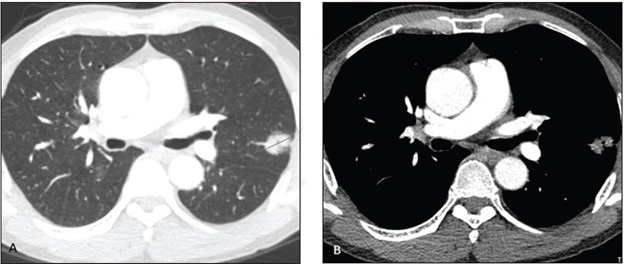Minor Ground-Glass Opacities Associated With Better Prognosis in Stage I NSCLC
Images

In patients with clinical stage I non-small cell lung cancer (NSCLC), cancers with a minor (≤ 10%) ground-glass opacity (GGO) component were associated with a better prognosis compared to those with pure-solid appearance, according to the American Journal of Roentgenology (AJR).
“Radiologists encountering predominantly solid nodules on CT should carefully assess images for even a minor-GGO component, given the favorable prognosis,” noted corresponding author Wei Li, MD, from China’s Shanghai Pulmonary Hospital and Tongji University School of Medicine.
Li et al.’s AJR accepted manuscript included 382 patients (mean age, 61 years; 210 men, 172 women) who underwent surgical resection between January 1, 2015 and December 31, 2015 for clinical stage I NSCLC appearing on preoperative chest CT as a nodule with a consolidation-to-tumor (CTR) ratio ≥ 0.9 and < 1.0. Two radiologists independently assigned nodules to a minor-GGO (≥ 0.9 CTR < 1.0) or pure-solid (CTR = 1.0) groups.
Ultimately, in clinical stage 1 NSCLCs, those with a minor-GGO component on preoperative CT—compared those having a pure-solid appearance—showed significantly better 5-year recurrence-free survival (83.4%vs. 55.0%; p <.001), as well as significantly better 5-year cancer-specific survival (92.4% vs. 76.4%, p =.004).
Related Articles
Citation
Minor Ground-Glass Opacities Associated With Better Prognosis in Stage I NSCLC. Appl Radiol.
May 30, 2024